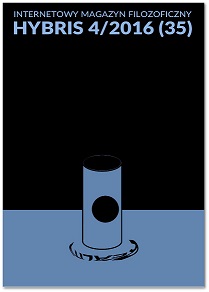Conceptual spaces in object-oriented framework
DOI:
https://doi.org/10.18778/1689-4286.35.01Keywords:
Conceptual spaces, Object-oriented framework, prototype theory of categorization, vagueness, cognitive architectureAbstract
The aim of this paper is to show that the middle level of mental representations in a conceptual spaces framework is consistent with the OOP paradigm. We argue that conceptual spaces framework together with vague prototype theory of categorization appears to be the most suitable solution for modeling the cognitive apparatus of humans, and that the OOP paradigm can be easily and intuitively reconciled with this framework. First, we show that the prototype-based OOP approach is consistent with Gärdenfors’ model in terms of structural coherence. Second, we argue that the product of cloning process in a prototype-based model is in line with the structure of categories in Gärdenfors’ proposal. Finally, in order to make the fuzzy object-oriented model consistent with conceptual space, we demonstrate how to define membership function in a more cognitive manner, i.e. in terms of similarity to prototype.
References
Berlin Brent, Kay Paul, 1969, Basic color terms, Berkeley: University of California Press.
View in Google Scholar
Coombs Clyde Hamilton, 1964, A theory of data, New York: Wiley.
View in Google Scholar
Decock Lieven, Douven Igor, 2014, What Is Graded Membership? “Noûs”, 48, pp. 653–682.
View in Google Scholar
DOI: https://doi.org/10.1111/nous.12003
Douven Igor, Decock Lieven, Dietz Richard, Égré Paul, 2013, Vagueness: A Conceptual Spaces Approach, “Journal of Philosophical Logic” 42(1), pp. 137–160.
View in Google Scholar
DOI: https://doi.org/10.1007/s10992-011-9216-0
Evans Vyvyan, A Glossary of Cognitive Linguistics, Edinburgh: Edinburgh University Press
View in Google Scholar
Gärdenfors Peter, 2000, Conceptual spaces, Cambridge: MIT Press.
View in Google Scholar
DOI: https://doi.org/10.7551/mitpress/2076.001.0001
Gärdenfors Peter, 2014, Geometry of meaning – Semantics based on conceptual spaces. Cambridge: MIT Press.
View in Google Scholar
DOI: https://doi.org/10.7551/mitpress/9629.001.0001
Gärdenfors Peter, 2015, Cognitive science: from computers to ant hills as models of human thought [in:] Gemel A., Łukowski P., Żukowski B., (ed.), Cognition, Meaning and Action. Lodz-Lund Studies in Cognitive Science, Lodz-Cracow: Lodz – Jagiellonian University Press.
View in Google Scholar
DOI: https://doi.org/10.18778/7969-759-5.02
Hampton A. James, 2007, Typicality, Graded Membership, and Vagueness, “Cognitive Science” 31(3), pp. 355-384.
View in Google Scholar
DOI: https://doi.org/10.1080/15326900701326402
Marin Nicolas, Pons Olga, Vila A. Maria, 2000, Fuzzy Types: A New Concept of Type for Managing Vague Structures, “International Journal of Intelligent Systems”, Vol. 15, pp. 1061-1085.
View in Google Scholar
DOI: https://doi.org/10.1002/1098-111X(200011)15:11<1061::AID-INT5>3.0.CO;2-A
Marin Nicolas, Pons Olga, Vila A. Maria, 2001, A Strategy for Adding Fuzzy Types to an Object-Oriented Database System, International Journal Of Intelligent Systems, Vol. 16, pp. 863-880.
View in Google Scholar
DOI: https://doi.org/10.1002/int.1039
Mather George, 2001, Object-oriented models of cognitive processing, “Trends in Cognitive Sciences”, 5(5), pp. 182-184.
View in Google Scholar
DOI: https://doi.org/10.1016/S1364-6613(00)01649-1
Mayhew John, Frisby John, 1984, Computer vision, [in:] O’Shea T., Eisenstadt M., (eds.) Artificial Intelligence: Tools, Techniques, and Applications, New York: Harper & Row pp. 301–357.
View in Google Scholar
Mervis Catlin, Rosch Eleanor, 1981, Categorization of natural objects, „Annual Review of Psychology” 32, pp. 89-115.
View in Google Scholar
DOI: https://doi.org/10.1146/annurev.ps.32.020181.000513
Lakoff George, 1987, Women, Fire and Dangerous things: What Categories Reveal about the Mind, Chicago: University of Chicago Press.
View in Google Scholar
DOI: https://doi.org/10.7208/chicago/9780226471013.001.0001
Osherson N. Daniel, Smith, E. Edward, 1981, On the Adequacy of Prototype Theory as a Theory of Concepts, “Cognition” 29, pp. 259–288.
View in Google Scholar
Rosch, Eleanor, 1975, Cognitive Representation of Semantic Categories, w: „Journal of Experimental Psychology”, 104, pp. 192-233.
View in Google Scholar
DOI: https://doi.org/10.1037/0096-3445.104.3.192
Shepard N. Roger, 1962, The analysis of proximities: Multidimensional scaling with an unknown distance function. Part l, „Psychometrika” 27, pp. 125-140.
View in Google Scholar
DOI: https://doi.org/10.1007/BF02289630
Sheetz, Steven, Tegarden David, 2001, Illustrating the cognitive consequences of object-oriented systems development, “The Journal of Systems and Software”, 59, pp. 163-179.
View in Google Scholar
DOI: https://doi.org/10.1016/S0164-1212(01)00060-7
Taivalsaari Antero, 1997, Classes vs. Prototypes: Some Philosophical and Historical Observations, “Journal of Object-Oriented Programming” 10(7), pp. 44-50.
View in Google Scholar
Downloads
Published
How to Cite
Issue
Section
License

This work is licensed under a Creative Commons Attribution-NonCommercial-NoDerivatives 4.0 International License.






